


La improvisación libre tiene múltiples facetas. En la entrega 166 de HDO, se muestran algunas de ellas acudiendo a tres grabaciones publicadas en los últimos meses. En el programa suenan Enfances (Fou Records, 2016) de Daunik Lazro, Joëlle Léandre, George Lewis que se grabó en 1984, y que en parte había aparecido en el doble LP Sweet Zee (HatArt); Flowers (Cipsela Records, 2016) de Joe McPhee, grabado en 2009 en la séptima edición del Jazz Ao Centro Festival de Coimbra; finalmente Elastic (Cipsela Records, 2016) de Joëlle Léandre, Théo Ceccaldi grabado en directo el 2 de octubre de 2015.
© Pachi Tapiz, 2016
HDO es un podcast editado, producido y presentado por Pachi Tapiz.
D. LAZRO / J. LÉANDRE / G. LEWIS
«Enfances 8. janv. 1984»
FOU RECORDS FR-CD 18
Så får vi mer frijazz, og frijazz fremført på en ytterst løssluppen måte, slik vi etter hvert er blitt vant til å høre bassisten Joëlle Lénadre. Men dette er et opptak fra Frankrike den 8. januar 1984, og Léandre og de andre to, beviser at man ikke tok musikken altfor seriøst den gangen heller.
Av de tre vi møter på denne innspillingen/leken, er det altsaksofonisten Daunik Lazro vi kjenner dårligst. Han er født i 1945, og er inspirert av Albert Ayler og Ornette Coleman. Han har samarbeidet med alle «galningene» i den auropeiske frijazzen, så som Tristan Honsinger, Toshinori Kondo, Joe McPhee, Evan Parker, Iréne Schweizer, Claude Tchamitchian og Noël Akchoté opp gjennom årene, og møtet med Léndre og Lewis føyer seg godt inn i sammenhengen.
Den amerikanske trombonisten George Lewis er nærmest en legende innenfor den friere, amerikanske jazzen. Hans duosamarbeid med saksofonisten Anthony Braxton på platen «Elements Of Surprise» (Moers Music), er en gullgruve, hvor deres versjon av Parker-låta «Ornitologhy» var en perle.
Joëlle Lénadre er bassisten over alle bassister i Frankrike. Hennes anarkistiske tilnærming til musikken, og sitt eget bass-spill er enestående, samtidig som hun bruker vokalen nesten som en operasanger, i tett tilknytning til bass-spillet.
Sammen har de gjort 10 låter med betegnelsen «Enfance 1 – 10», og all musikken er fritt improvisert i studio.
Dette er utvilsomt musikk som av mange vil bli omtalt som håpløst og uforståelig. Selvfølgelig skulle man ha sittet som en flue på veggen i studio når dette ble tatt opp, for å få den rette effekten av musikken, men selv på plate fungerer dette ettewr min mening godt, innimellom.
Det blir noen litt intetsigende transportetapper, men når det fungerer, så fungerer det mer enn godt nok.
Vi møter tre musikere som er helt på bølgelengde, og den frie improvisasjonen kommuniserer godt, og galskapen til Léandre er alltid morsom å være vitne til.
Jan Granlie
Daunik Lazro (as), Joëlle Léandre (b, v), George Lewis (tb, toys)
Av Jan Granlie
Daunik LAZRO – Joëlle LÉANDRE – George LEWIS : « Enfances – 8 janv. 1984 »

Un enregistrement « légendaire » ou tout au moins historique publié en partie en 1985 sur le label suisse Hat-Hut. Jean-Marc Foussat nous permet de le retrouver en totalité pour savourer l’art de l’impro à son plus haut niveau.
NB : prochainement, nous publierons un entretien avec Joëlle Léandre réalisé par Pierre Gros... À suivre...
> Fou Records - FR CD 18 / Musea
Daunik Lazro : saxophone alto / Joëlle Léandre : contrebasse, voix / George Lewis : trombone, jouets.
01. Enfance 1 / 02. Enfance 2 / 03. Enfance 3 / 04. Enfance 5 / 06. Enfance 6 / 07. Enfance 7 / 08. Enfance 8 / 09. Enfance 9 / 10. Enfance 10 // Enregistré en concert au 28 Rue Dunois (Paris) le 8 janvier 1984. (NB : une partie de ce disque a été publiée sur le label Hat-Hut en 1985).
Le Dunois était un lieu magique et indispensable dans les années 80’s pour la musique improvisée européenne. Dans ce petit théâtre parisien circulait en quasi permanence un homme affublé d’un magnétophone qui ne le quittait jamais. Il enregistrait la plupart des évènements qui s’y déroulait, dans la plus grande discrétion. Aujourd’hui, plus de trente ans après, il nous restitue le travail d’orfèvre qu’il a réalisé, dans une branche de son label qu’il a tout simplement dénommé FOU. Fou, oui il fallait bien l’être, et encore plus maintenant, pour produire des disques qui marqueront à tout jamais l’histoire de l’improvisation musicale. Fou, comme Foussat aussi, Jean-Marc de son prénom, qui nous offre ainsi le quatrième volet de la série, après le trio Daunik Lazro / Peter Kowald / Annick Nozati, le Willem Breuker Kollektief à Angoulème en 1980 et le quartet Bailey / Léandre / Lewis / Parker (déjà au Dunois en 1982). Pour cet opus, on reprend une partie des mêmes, à savoir Daunik Lazro à l’alto, Joëlle Léandre à la contrebasse et la voix et le tromboniste américain George Lewis.

L’entrée en matière est perturbée. Le duo Lazro / Léandre a entamé sa course, brusquement arrêtée au bout de deux minutes. Que s’est-il passé ? Sans doute l’arrivée sur la scène du tromboniste (il nous manque la vidéo), échanges humoristiques, rires et nouveau départ du duo français, chant suraigu de la contrebassiste, cris de canard par le saxophoniste, et intégration du tromboniste avec ses jouets, tandis que la contrebasse se joue de l’archet. Des sonorités inouïes, on sent que la sauce est en train de prendre, la citation de l’hymne à la joie nous amène vers les deux pièces les plus longues du disque, signe que désormais les trois musiciens sont en phase et s’amusent beaucoup, à travers la voix, le jeu de bouche du saxophoniste sur le bec et les jouets du tromboniste amusé. "Enfances" porte vraiment bien son nom, mais aussi en référence à Rimbaud et ses "Illuminations". Une partie de ce concert (21 minutes environ) figurera sur l’album Sweet Zee de Daunik Lazro publié l’année suivante par Hat Art (Hat Art 2010) pour compléter le double LP. Ce disque, monté par Lazro, devait d’ailleurs sortir sur le label suisse… les circonstances ont fait qu’après renoncement de Werner P. Uehlinger, le label Fou n’a pas hésité.
Archet omniprésent, pastiche, discours échevelé et surréaliste de Léandre, son parfois crasseux, parfois fragmenté ou souvent aérien de Lazro, trombone frondeur et jouets farceurs de Lewis, cette unique rencontre du trio (tout comme celle de Lazro avec Kowald et Nozati) n’a pas pris une ride. Elle est le témoin d’une époque où les rencontres entre improvisateurs se multipliaient, grâce à l’action de certains acteurs et l’envolée des festivals libres. Alors, ne boudons pas notre plaisir et laissons nous retourner en enfance avec ces trois musiciens qu’on aimerait revoir sur scène ensemble.
P.S. : le disque est dédiée à Annie Trézel, qui avait réalisé les photos publiées sur Sweet Zee et d’autres, comme celle en couverture de la discographie de Joëlle Léandre par Francesco Martinelli (bandecchi & vivaldi editore, 2002), et décédée en 2015.
D. Lazro, J. Léandre*, G. Lewis "Enfances 8 Janv. 1984" [CD] ??: 1,804? (??)
|
Label: Fou Records - FRCD018
???????????????????80?????????????????????-?????????Jean-Marc Foussat???1984?1?8???????????????????????????????/?????????Joëlle Léandre???????????????????????????????????Jean-Marc?????????????? >>SAMPLE<< Daunik Lazro, alto saxophone, Joëlle Léandre, bass, voice, George Lewis, trombone, toys. Recorded at Dunois in Paris on January 8, 1984, by Jean-Marc Foussat. |
Draai om je oren Jazz en meer - Weblog |
maandag 3 oktober 2016 |
||
| |
|||


Lazro / Léandre / Lewis
Enfances
Daunik Lazro (as), Joëlle Léandre (b, voc), George Lewis (tb, objets)
Label / Distribution : FOU Records
On peut compter sur Jean-Marc Foussat et son label Fou Records pour nous nourrir régulièrement en excitantes archives. Voilà le retour des pochettes noires, blanches et rouges : après Joëlle Léandre en quartet au Dunois en 1982 et le Willem Breuker Kollektief à Angoulême, voici un autre voyage temporel. Retour à la case Dunois, cette fois-ci en 1984, avec Daunik Lazro et Joëlle Léandre, l’une des âmes vivantes du théâtre parisien. Aux côté des deux improvisateurs français, un vieux complice étasunien, le tromboniste George Lewis qui se livre à l’une de ses prestations des plus enflammées, transformant son instrument en différents générateurs de bruits, de sons, de jeux d’embouchures ou de jeux tout court, comme en témoigne « Enfance 3 ». Sur l’archet rêveur de Léandre, il joue à cache-cache avec l’alto, s’entiche d’un cri qu’il fait glisser sur sa coulisse pour mieux attraper son complice soufflant, tout aussi turbulent. Enfance, le nom est idéal. Il évoque la malice et la pétulance qui peuvent résumer ce spectacle entier. Les idées jaillissent de partout, souvent désordonnées mais toujours propices à de nouvelles insouciances ludiques.
Le long « Enfance 5 » en est le parfait exemple. Joëlle Léandre chante, indubitablement plus lyrique qu’elle ne l’est aujourd’hui (on s’amusera notamment, dans « Enfances 8 » de sa citation de Carmen…), pendant que le saxophone de Lazro charrie des influences qui vont de Ayler à McPhee. Pour sa part, Lewis ponctue tout cela d’un arsenal de timbres divers, parfois indéfinissables, qui poussent ses camarades dans leur retranchements. Cela pourrait vite tourner à la farce, mais ce serait sans compter sur la capacité inédite de ces improvisateurs à se remettre en question. Lazro ferraille avec le trombone, s’invite dans le babil, souffle sur les braises alentour pour transmuer l’énergie en puissance. Lorsque la contrebassiste se met à crier à trois reprises « Mais qu’est-ce qu’il fait » dans un souffle, comme un affolement général, ses compagnons se mettent à la poursuivre dans un fracas aussi soudain qu’il peut être théâtral. La musique investit le champ de la nonchalance et de la malice, mais ce n’est pas au détriment de la maîtrise.
C’est sans doute ce qui s’épanche dans Enfances : enfance de l’art, enfance de l’improvisation… Joëlle Léandre venait de sortir ses Douze Sons, et l’on perçoit encore une articulation voix/archet en devenir ; une partie de ce concert était consigné dans le double album Sweet Zee, paru chez HatHut en 1985 [1] . Il s’agissait du troisième album de Daunik Lazro sous son nom. C’est touchant et enrichissant, a fortiori si on ne l’a pas vécu, de se plonger dans cette captation ancienne qui dit beaucoup de choses sur l’improvisation actuelle et sur le cheminement de ces musiciens. Loin de la passementerie qu’impliquait la face de vinyle, nécessairement limitée en temps, le fait d’entendre d’une traite l’intégralité du concert permet d’apprécier la préparation acérée du trio. Ici, on dispose des erreurs, des fausses pistes, d’une création qui jubile de son immédiateté. Ce qui impressionne, c’est la volonté farouche de trouver un point de convergence, le plus intense qui soit. Il canalise sans effort une fougue où rien ne se perd. Ces enfants n’ont pas pris une ride. L’improvisation est une fontaine de jouvence.
Daunik Lazro, Joëlle Léandre & George Lewis - Enfances à Dunois le 8 janvier 1984 (Fou Records, 2016) ****
Amazing to think that 30 years of Joëlle Léandre’s many collaborations with Daunik Lazro and George Lewis began with a recording we’ve never heard in full before now. As I’ve been soaking in all the writing this week, I revisited a couple of seminal albums also recorded in the 1980s, particularly the Intakt releases The Storming of the Winter Palace (the epic quintet featuring Léandre, Lewis, Maggie Nicols, Irène Schweizer, and Günter Sommer) and Paris Quartet (Léandre’s album with Lazro, Schweizer, and Yves Robert). A portion of this trio performance appeared on Lazro’s HatHut set, Sweet Zee, but if I’m not mistaken, this is the first release of the complete session. Thinking about how this is likely the first recorded meeting of these three, the clarity of the recording would be enough to recommend it, for its historical value. But the real prizes here are the vibrancy and ingenuity of three great improvisers in collaboration.
The opening 30 seconds of “Enface 1” contain a scattering of percussive noises (think Art Ensemble of Chicago-style little instruments), Léandre’s voice, and the briefest tease of Lazro’s sax. A minute later, the trio is fully awoken. Lazro and Léandre have long been collaborating, and the genesis of their partnership illuminates how well matched they’ve been since the beginning. All three musicians boast tremendous talent and commitment to the moment, but there’s also sly humor and a passionate drive to urge listeners to out of their traditionally passive role. “Enfance 4” is a wonderful examples of this, with Léandre’s arco solo suddenly interrupted by Lewis and Lazro’s riffs and squaks.
“Enface 5” is something of preview of the past 30 years in retrospect. Early on, Lazro takes a lyrical solo, which Léandre quickly picks up on bass. The two continue moving forward, somewhat hesitantly, before ceding the floor to Lewis for an extended solo. The three come together in a swirling passage of singing, bass, trombone, and sax, which contrasts staccato passages with brassy outbursts. Hearing it all hang together in synchrony, I was somewhat on edge, waiting to hear how long the passage would sustain itself.
With most of the tracks clocking in at sub-4 minutes, the 20-minute “Enface 5” and 12-minute “Enface 6” form the centerpiece of the album. Toward the middle of “Enface 6” is a Lazro/Lewis duet, with the two weaving their lines together into a dense run. Gradually, Léandre joins, then quickly takes centerstage for a solo that sets the path forward for the piece’s conclusion. The final track, “Enface 10,” plays like a strident plea that could be a call for peace, a call to action, or a call simply echoing out into space, perhaps never to be answered.
Daunik Lazro | Joëlle Léandre | George Lewis – Enfances
 Fou | FR-CD 18 | 2016
Fou | FR-CD 18 | 2016
Daunik Lazro ’85-ben megjelent Sweet Zee cím? albumának B oldalán öt rövid koncertfelvétel kapott helyet, amin a francia szaxofonos George Lewis harsonás és Joëlle Léandre nagyb?g?s oldalán játszik. A teljes B oldal az akkori, Hat ART által kiadott bakelitverzión az Enfances alcímet kapta. A felvételeket ’84 január 8-án Jean-Marc Foussat rögzítte a párizsi Théâtre Dunois-ban, és most hála neki, b? három évtizeddel kés?bb, a koncert teljes terjedelmében közkinccsé vált. Bár az eredeti számcímek elt?ntek, itt van helyette az Enfance 1-10, több mint 57 percben.
Nem ez az els? alkalom, hogy Foussat az improvizált zene históriájának jelent?s, ám évtizedekig fiókban maradt találkozásait leporolja, és cd-lemez formájában megjelenteti. Fou nev? kiadója friss kollaboratív- vagy éppen szólómunkák publikálása mellett egy archivációs sorozatot is futtat: a jellegzetes piros-fehér-fekete borítódizájn arra enged következtetni, hogy a teljes Enfances-koncert a korábban kiadott Derek Bailey-Joëlle Léandre-George Lewis-Evan Parker Quartet (28 Rue Dunois Juillet 1982) és a Willem Breuker Kollektief (Angoulême 18 Mai 1980) nyitotta lemezszériába illeszkedik. Az, hogy Jean-Marc Foussat digitálisan feljavítja és nyilvánosság elé tárja ezeket az archív hanganyagokat, felettébb örömteli – és minimum hiánypótló.
Nem kizárt, hogy a most tárgyalt francia-amerikai hármas a nyolcvanas évek második felét?l többször is játszott együtt, ám lemezt soha nem rögzítettek. A résztvev? hangszeresek munkakapcsolata más kontextusban persze továbbra is megmaradt, George Lewis és Joëlle Léandre ’86-ban Maggie Nicols, Irène Schweizer és Günter Sommer táraságában rögzített felvételeket, amik kés?bb a The Storming Of The Winter Palace cím? albumon láttak napvilágot; majd rá egy évre Daunik Lazro és Joëlle Léandre szintén Schweizerrel és Yves Roberttel közösen jelentett meg egy kvartettlemezt, ez pedig a még ma is végtelenül frissnek t?n? Paris Quartet volt. Lazro és Léandre együttm?ködése a legnagyobb szerencsénkre a mai napig töretlen, legutóbb három éve jelentettek meg egy kiváló duólemezt Hasparren címmel.
 És itt van most ez a jellegzetes borítójú korong, amin els? ízben élvezhetjük teljes terjedelmében a trió játékát. A játékot, ami a szó legszorosabb értelmében van jelen. Nem hallottam még olyan lemezt, amin Léandre ilyen mennyiségben használta volna jóles?en komikus énekhangját, Lewis a harsonája mellett csipogó-csörg? játékokat szólaltat meg, Lazro pedig mintha egy játszótér önfeledt zsivaja fölött körözne olykor légies, olykor pedig szándékosan csikorgó futamaival. A zenészek hallhatóan elemükben vannak, minden pillanatát élvezik a közös játéknak, s?r? összekacsintások közepette adogatják egymásnak a magaslabdákat, fergeteges ötleteikkel mintha egymást próbálnák túllicitálni.
És itt van most ez a jellegzetes borítójú korong, amin els? ízben élvezhetjük teljes terjedelmében a trió játékát. A játékot, ami a szó legszorosabb értelmében van jelen. Nem hallottam még olyan lemezt, amin Léandre ilyen mennyiségben használta volna jóles?en komikus énekhangját, Lewis a harsonája mellett csipogó-csörg? játékokat szólaltat meg, Lazro pedig mintha egy játszótér önfeledt zsivaja fölött körözne olykor légies, olykor pedig szándékosan csikorgó futamaival. A zenészek hallhatóan elemükben vannak, minden pillanatát élvezik a közös játéknak, s?r? összekacsintások közepette adogatják egymásnak a magaslabdákat, fergeteges ötleteikkel mintha egymást próbálnák túllicitálni.
A Hat ART-os, részleges kiadványon anno csak a rövidke, 3-4 perc játékidej? improvizációk kaptak helyet, a teljes változat központi tételei most viszont egyértelm?en a közel húszperces Enfance 5, és a b? tízperces Enfance 6: a lemez közel felét kitev? részben el?bb Lewis ráér?sen elnyújtott harsonaszólója, majd Lazro és Lewis hosszabb és meglehet?sen s?r? duója marad emlékezetes. Zenéjüket hallgatva, számomra nem kétséges, hogy ez a három hangszeres mennyire imádja egymást, és mennyire imádnak együtt játszani. Azt a szeretetet, játékosságot, frissességet és szinte már-már valószín?tlenül kreatív energiát, ami több mint három évtizeddel ezel?tt jelen volt a Théâtre Dunois színpadán, az Enfances maradéktalanul meg?rizte.
Az Enfances – apropó, az album címe: Gyermekkor – amellett, hogy három kivételes jelent?ség? hangszeres kollaborációját dokumentálja, briliáns korlenyomat is egyben. A lemez a nyolcvanas évek párizsi free jazz színterének egy apró, ám annál csillogóbb darabkáját konzerválta az utókornak.
1. Enfance 1 [2:08] 2. Enfance 2 [1:30] 3. Enfance 3 [2:12] 4. Enfance 4 [3:56] 5. Enfance 5 [19:33] 6. Enfance 6 [11:14] 7. Enfance 7 [1:29] 8. Enfance 8 [8:09] 9. Enfance 9 [1:00] 10. Enfance 10 [4:51]
joelle-leandre.com
fourecords.com
DAUNIK LAZRO / JOËLLE LÉANDRE / GEORGE LEWIS – Enfances
January 1984. As your darling reviewer was living his life’s best year – school finished six months prior, stint in the Italian army still to come, everything simply perfect in total “I-do-what-I-want” mode – three big names of improvisation were already at work to establish priorities and levels in the “acoustic freedom” category. Heterodoxy of timbres, vivid intelligence and communal intuitiveness made sure that, on a winter evening in Paris, Lazro (alto sax), Léandre (double bass and voice) and Lewis (trumpet and toys) would manufacture something special. That “something” is finally documented in its entirety in this exquisite release, of which about 20 minutes had appeared on Lazro’s double LP Sweet Zee (HatART), published six years prior.
So, once again we’re trying and distinguish between people born with a gift and peddlers of virtues that do not exist at all. For starters, this trio all but ignored the meaning of “inertia”. In varying combinations, they merely opened the arms and let the energies of instantaneous reaction flow through the bodies. The sounds are positioned with committed precision in spite of their spontaneous generation; a sensible improviser always know when it’s time to speak, to remain mute, or just to laugh at the surrounding events while keeping up with the ongoing currents. Naturally, this is not enough to produce entertaining music. Most of all, what’s needed in such a context is the capacity of portraying diverse realities in the space of instants. Lazro’s resolute discharges transmit a sense of passionate animation; Léandre’s mixing of powerful technique and ironic poetry has become a trademark over the decades; Lewis’ unusual utterances and joyful chatter complement the interplay with a cross of indiscipline and fluidity. The magic lies in the impeccable proportions of the resulting materials, invaluable segments of “here and now” counterpoint permeated with spectacular clarity and not a little fun. A temporary relief, if you will, for those who crave a universal resurrection via sheer sonic liveliness. Count me among them, steadily dwindling hopes notwithstanding. Or call the ambulance, and prepare the straitjacket.
Sophie Agnel + Daunik Lazro
Marguerite D'Or Pâle
Fou Records FR CD 21
Daunik Lazro + Joëlle Léandre + George Lewis
Enfances à Dunois le 8 janvier 1984
Fou Records FR CD 18
Evan Parker + Daunik Lazro + Joe McPhee
Seven Pieces: Live at Willisau 1995
Clean Feed CF397CD


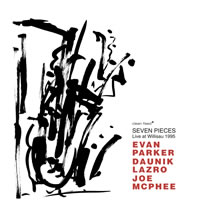 French saxophonist Daunik Lazro has been a key figure in European free jazz and improvised music for forty years. These three recent releases demonstrate the quality of his work in different contexts over the past thirty years, as well as touching on shifting approaches in the music.
French saxophonist Daunik Lazro has been a key figure in European free jazz and improvised music for forty years. These three recent releases demonstrate the quality of his work in different contexts over the past thirty years, as well as touching on shifting approaches in the music.
Enfances à Dunois le 8 janvier 1984 presents Lazro, exclusively on alto, along with Joëlle Léandre (on bass and vocals) and George Lewis (on trombone and toys) in a series of duos and triosthat are at once provocative and playful in the extreme, at times with the effect of radio dial twirling. 21 minutes of this 57-minute performance was released in 1985 as part of Lazro’s two-LP set Sweet Zee on HatHut (the other sessions had an international cast that included American cellist Tristan Honsinger, Japanese trumpeter Toshinori Kondo and Portuguese violinist Carlos Zingaro). The restored concert gives a view of the music’s depths as well as its variety.
The performance’s brief events present musics of radically different shape. “Enfances 2” has Léandre practicing a kind of sprechgesang; after a few seconds of initial orientation, “Enfances 3” passes through a free-bop phase of light alto and trombone then goes on to other dimensions. Each piece is an explosion of different textures: there are different vocal and verbal intrusions, whether poetic or operatic; a whistling saxophone and chanson find momentary unison; bass sounds range from factory-noises to concert hall cello or violin elegance; trombone events range from trumpet register to gastric noise; sounds that suggest unlisted instruments (e.g. alto clarinet) occasionally arise.
The long segments – “Enfance 5” stretches to nearly 20 minutes – are both Dadaist playground and psychodrama in which any sonic event, including near-silence, is possible, and none is more likely than another, whether it’s Lazro’s soaring, Ayler-inspired melodies and choked whistles or Lewis’s speech-like muted episodes. In one particularly fine moment, Léandre supports a Lewis trombone oration with bowed walking bass (a creative feat as well as a technical one); elsewhere, Lewis lends a duck-quack mouthpiece obbligato to a pensive Lazro interlude. “Enfance 6” features the trio’s most sustained creative interaction, dense play that begins with Lazro and Lewis in duet to be eventually joined by Léandre supplying further forward momentum.
Seven Pieces: Live at Willisau 1995 documents a fine trio of three saxophonists who are also contemporaries – Lazro (born 1945), Evan Parker (1944) and Joe McPhee (1939). In 1996, material from the same tour was released eponymously on the Vand'Oeuvre label. The new release comes from a recently discovered cassette. If improvised music has at times suffered a certain surfeit of saxophones, the three heard here are models of taste and invention, consistently varying dynamics and approaches.
If the lineage of Ayler and Coltrane is inevitable, it’s entirely positive here, as in the cascading finale of “To Rush at the Wind” with Parker on tenor, Lazro on alto and McPhee on pocket trumpet. The Ellingtonian roots are less expected. The trio is at its lightest on the opening “Echoes of Memory,” emphasizing higher pitched horns – Parker and McPhee’s sopranos and Lazro’s alto. The dovetailing lines reveal consistent close listening, with lines frequently gathering in concluding unisons. Those Ellington suggestions are picked up with greater insistence later. On “Broadway Limited,” the extreme upper registers of Parker and McPhee’s soprano’s eventually give way to Lazro’s rough-hewn baritone, The finest of these moments is “Concertino in Blue”: it begins with Parker on tenor and McPhee on alto clarinet using circular breathing to play drones at the threshold of hearing, while Lazro creates a rich, lyric tapestry with his baritone’s lower register, a contemporary equivalent of Harry Carney.
The joy of this trio is that there’s a kind of excess of real contrapuntal content. It’s still densely musical when members lay out, whether it’s for a tenor/alto duet by Parker and Lazro (the two somehow suggesting a third voice) or Parker playing a characteristic soprano solo in which harmonics and lines multiply to create a choir of one. Recorded little more than a decade after the iconoclastic Enfances, Seven Pieces seems to reimagine traditions.
Marguerite d'Or Pâle (the CD invokes Mikhail Bulgakov’s wondrously strange The Master and Margarita) documents a Moscow concert from June 2016. It’s an intimate improvised study in concentrated listening and focused sonic gestures. Lazro plays baritone and tenor here, while Sophie Agnel gives as much attention to the piano’s interior and strings as she does the keyboard. While Lazro combines voice and embouchure to press isolated cries from his horns, seemingly seeking the instrument’s most authentic voice, Agnel strikes piano bass strings covered with multiple vibrating materials or creates bell-like chimes on the instrument’s frame. Sudden slashes of piano strings lacerate the air; in another moment, a saxophone sound will contort into speech. Occasionally the duo will opt for high-speed synchronicity (“Bbystro!”), but it’s in the unheard resource, the fresh gesture, the muffled or muted complaint that they reveal the intensity and invention of their collaboration. The final episode “Ochi Chornye” is music of continuous change, including a passage of Agnel constructing ostinatos made up wholly of distinct sounds to accompany Lazro’s free exploration of ancient jazz romance (Ben Webster comes to mind) before he concludes with a juddering, multiphonic roar.
Lazro is as much the dedicated explorer today as he was decades ago, at once maintaining focus and challenging expectations, creating music that’s both vivid and individualistic. His work is well worth seeking out.
–Stuart Broomer
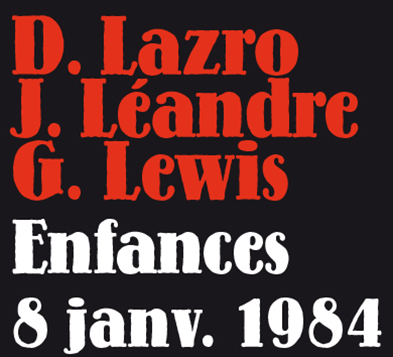





![??1: D. Lazro, J. Léandre*, G. Lewis 'Enfances 8 Janv. 1984' [CD]](http://www.art-into-life.com/data/a-i-l/_/70726f647563742f32303136303930315f3030623635622e6a70670033303000534f4c44204f555400660066.jpg)
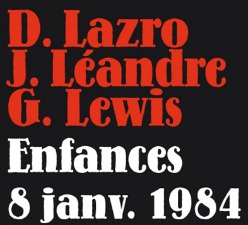 Cd's
Cd's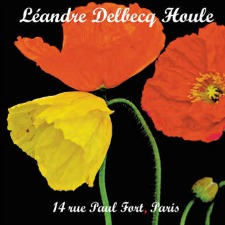 De opnames van de tweede trio-cd zijn van recentere datum, november 2013. Gemaakt op 14 Rue Paul Fort in Parijs, meteen ook de titel van de cd. En ook hier bestaat het album uit '14 Rue Paul Fort, Paris' nrs. 1 – 7. Hier horen we naast Léandre pianist Benoit Delbecq en klarinettist Francois Houle. Evengoed volledig geïmproviseerd klinkt deze set minder experimenteel - Léandre zingt niet en het speelgoed ontbreekt eveneens - en meer ingetogen. De instrumentatie draagt hier ook aan bij. De combinatie bas, piano en klarinet leent zich uitstekend voor deze race naar het zachte. Wat overigens niet betekent dat het er soms niet onstuimig aan toe kan gaan. En ondanks dat het ook hier om volledig geïmproviseerde muziek gaat, horen we op dit album ook Léandre's affiniteit en ervaring met hedendaags gecomponeerde muziek terug. De muziek doet ons bij tijd en wijle zeker denken aan hedendaagse kamermuziek. Bijzonder is '14 Rue Paul Fort, Paris 6', waarin vanuit het niets een bezwerende folkachtige melodie opduikt. Het doorbreekt de sfeer van de tot dan toe abstracte muziek.
De opnames van de tweede trio-cd zijn van recentere datum, november 2013. Gemaakt op 14 Rue Paul Fort in Parijs, meteen ook de titel van de cd. En ook hier bestaat het album uit '14 Rue Paul Fort, Paris' nrs. 1 – 7. Hier horen we naast Léandre pianist Benoit Delbecq en klarinettist Francois Houle. Evengoed volledig geïmproviseerd klinkt deze set minder experimenteel - Léandre zingt niet en het speelgoed ontbreekt eveneens - en meer ingetogen. De instrumentatie draagt hier ook aan bij. De combinatie bas, piano en klarinet leent zich uitstekend voor deze race naar het zachte. Wat overigens niet betekent dat het er soms niet onstuimig aan toe kan gaan. En ondanks dat het ook hier om volledig geïmproviseerde muziek gaat, horen we op dit album ook Léandre's affiniteit en ervaring met hedendaags gecomponeerde muziek terug. De muziek doet ons bij tijd en wijle zeker denken aan hedendaagse kamermuziek. Bijzonder is '14 Rue Paul Fort, Paris 6', waarin vanuit het niets een bezwerende folkachtige melodie opduikt. Het doorbreekt de sfeer van de tot dan toe abstracte muziek.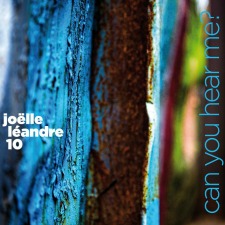 En diende zich bij '14 Rue Paul Fort' reeds de vergelijking met hedendaagse gecomponeerde muziek aan, bij deze live-cd is dat helemaal het geval. En dan niet alleen vanwege het feit dat het hier ook echt om gecomponeerde muziek gaat, maar vooral vanwege de complexiteit en de wijze waarop Léandre de grote diversiteit aan klankkleuren met elkaar vermengt, waarbij zij een subtiele samenhang weet te bereiken tussen een soms bijna serene melodieuze structuur en meer atonale passages. Op 'Can You Hear Me?' toont Léandre zich dan ook schatplichtig aan de grote componisten wiens werk zij heeft uitgevoerd. Dit is een album dat zowel de liefhebbers van avant-garde jazz als die van meer experimentele, abstracte gecomponeerde muziek zal aanspreken.
En diende zich bij '14 Rue Paul Fort' reeds de vergelijking met hedendaagse gecomponeerde muziek aan, bij deze live-cd is dat helemaal het geval. En dan niet alleen vanwege het feit dat het hier ook echt om gecomponeerde muziek gaat, maar vooral vanwege de complexiteit en de wijze waarop Léandre de grote diversiteit aan klankkleuren met elkaar vermengt, waarbij zij een subtiele samenhang weet te bereiken tussen een soms bijna serene melodieuze structuur en meer atonale passages. Op 'Can You Hear Me?' toont Léandre zich dan ook schatplichtig aan de grote componisten wiens werk zij heeft uitgevoerd. Dit is een album dat zowel de liefhebbers van avant-garde jazz als die van meer experimentele, abstracte gecomponeerde muziek zal aanspreken.